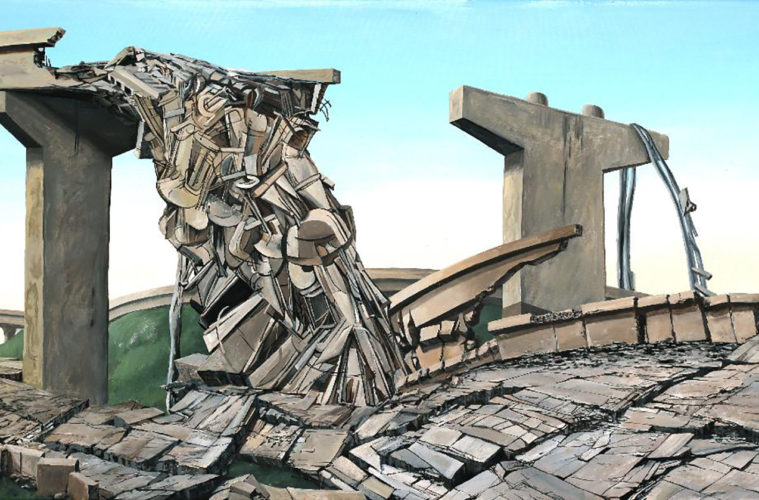To tour “Terra Incognita” is to delve into the personal and often idiosyncratic worlds of five artist couples.
Their combined works in this Orange County Center for Contemporary Art (OCCCA) exhibition reveal a variety of art disciplines, including painting, sculpture, assemblage and photography.
The show’s title, meaning “The Unknown Land,” alludes conceptually to the five couples’ distinctive, artistic interplay, as well as to their private art studios. Yet as most of these artist couples do not work collaboratively — as did the late Christo and his wife Jean-Claude — some of their finished art pieces differ dramatically in style, materials, technique and appearance from each other. Yet these differences often become the fertile ground for their creativity.
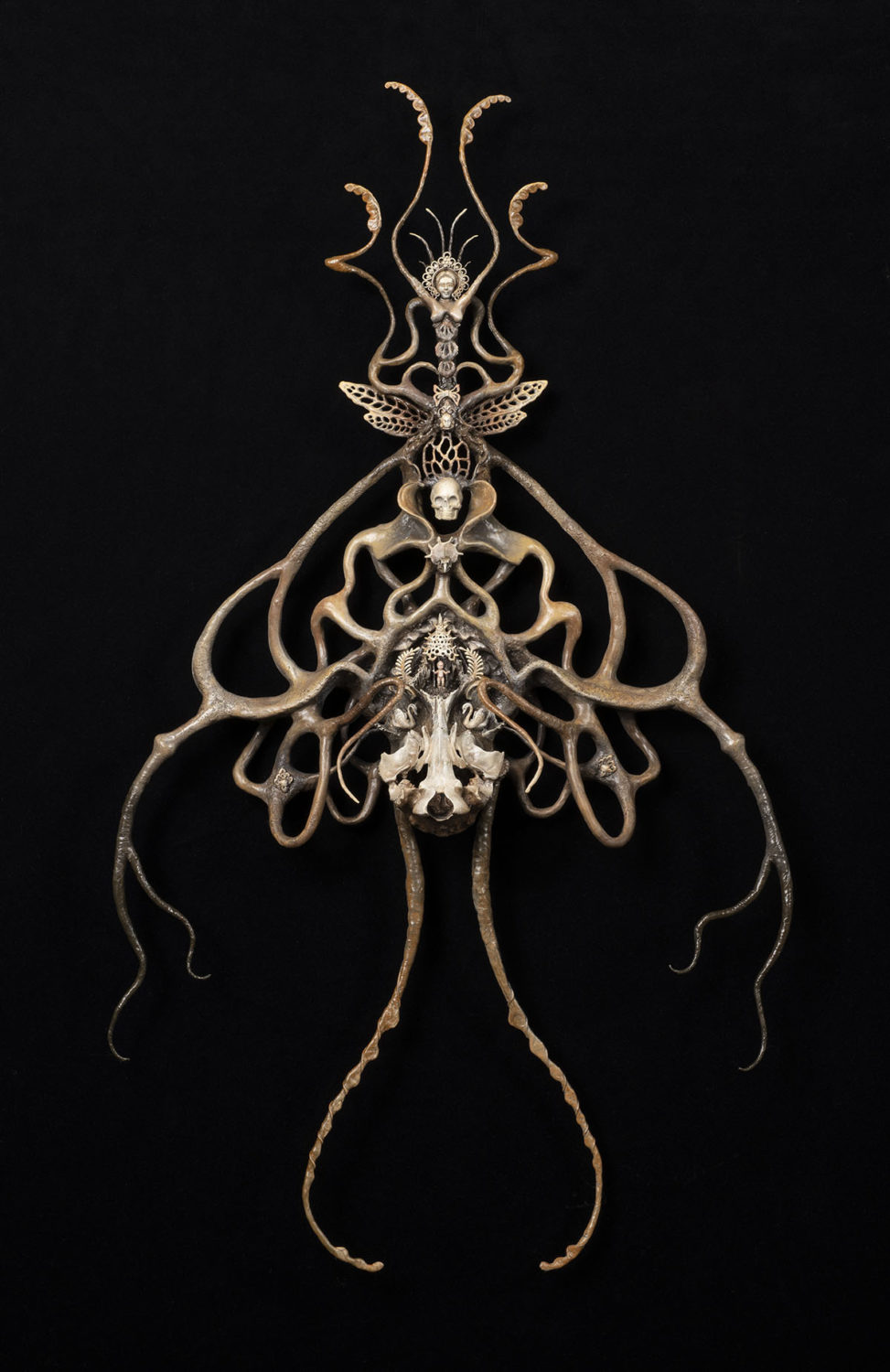
Laurie Hassold: “Sad Puppy”
For example, Jeff Gillette and Laurie Hassold create side by side while consulting with and critiquing each other. Jeff is a painter and assemblage artist, working in oil and found materials; and Laurie is a sculptor, employing metals, wire, ceramics and even animal head models in her work. Part of their commonality is that both artists explore in their work a universal dystopia, when humans are diminished or have vanished from our planet.
Gillette is famous in part for his “Dismayland” paintings, some displayed by the famed yet elusive British artist Banksy. Yet for this show, he exhibits his “Slumscape” paintings. These architecturally accurate depictions of slums in India and other impoverished countries — including his painting “Power Puff Beach” — are enhanced by Disney characters, some of them bearing frightened expressions, and most hovering in the air.
Hassold’s intricate, otherworldly and eerily beautiful sculptures are inspired by her fascination with fossils, skeletal remains, science fiction and fairy tales. These “Future Fossils,” as she calls them, are insect-like creatures that will survive our planet long after humans have extinguished themselves.
Eric Stoner’s large, intricate collages reveal his penchant to imbue his pieces with a variety of found materials. These include cut-out images from photos (he is a professional photographer), pictures from art books, vintage postcards, pages from flyers and magazines, silk flowers and especially in this show, toy dinosaurs and other prehistoric animals. He then hammers the many pieces of detritus onto wood panels. His inspiration for “The Great Zion Rift” and other paintings in this show are fossils from the late Jurassic period that he looked at as a child, along with the work of Hieronymus Bosch and Pieter Breughel.
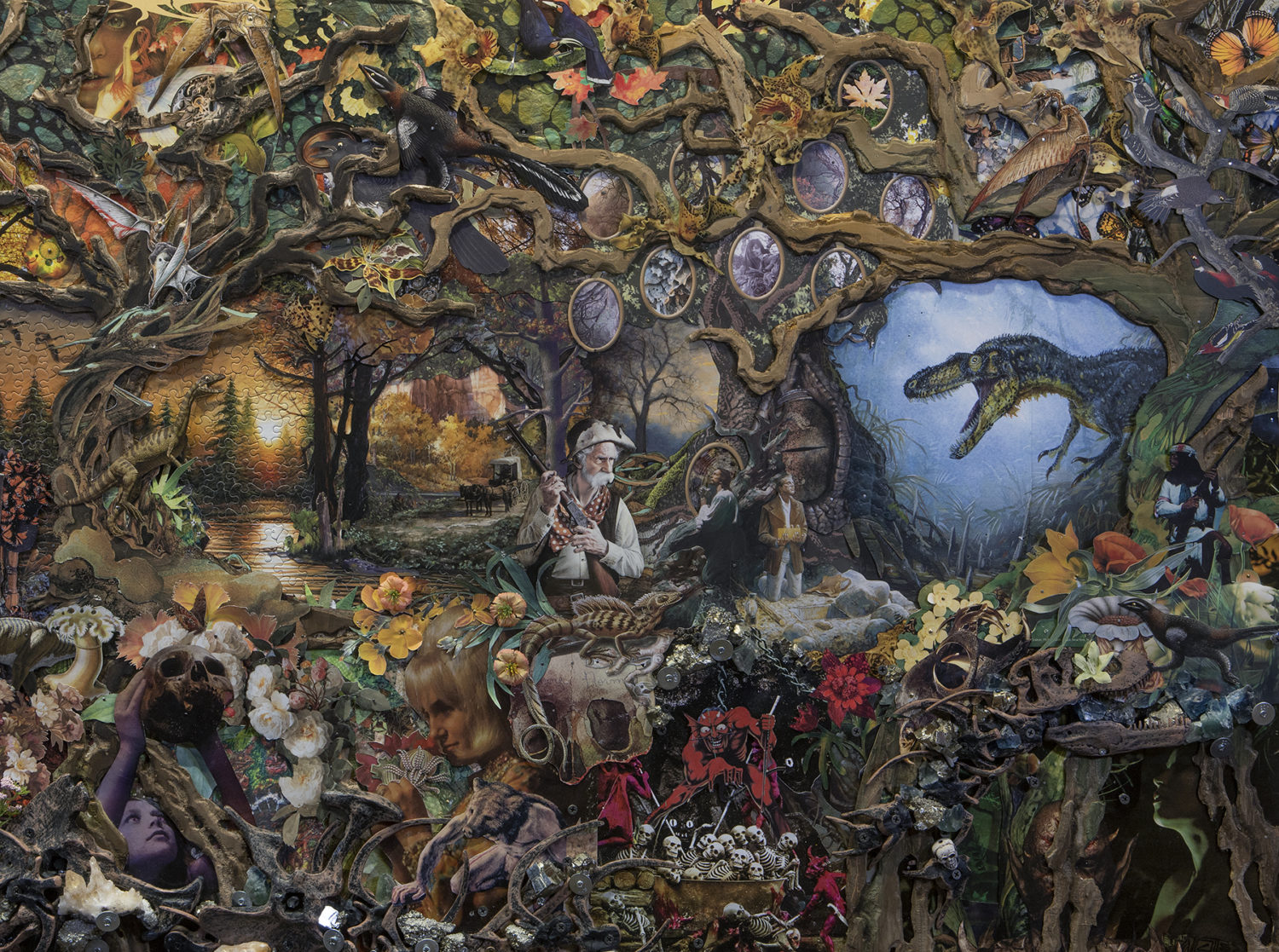
Eric Stoner: “The Burned Over District”
His partner, Stephanie McManus, who has driven many miles throughout the American west with him, creates oil paintings, such as “Beach Path,” inspired by their travels. These calm, luminous artworks, perhaps influenced by California Impressionism, are a counterpoint to Stoner’s work.
Robin Repp and husband Robert H. Repp are photographers who travel together and take pictures. Their completed works, while alluding to similar scenes, are very different from each other’s in technique, intention and appearance. Robin’s large black and white infrared images, often of barren landscapes, with one titled, “The Last Tree,” explore the effects of climate change on our land. Her work includes disappearing glaciers and a SoCal bird refuge. As Laurie Hassold explores in her work, Robin anticipates in her images an unknown future.

Robert Repp: “More Mars”
Robert’s color images employ muted earth tones and are more abstract and conceptual than are Robin’s. While his work is inspired by their mutual travels, he often begins a piece by looking at digital images. He then abstracts a segment from that image, which he chooses for its color or composition or both, and enlarges that section until it takes on the appearance of a landscape. Creating his digital photos with titles as “More Mars” and “Mars Surface,” he explains, “I feel like I am painting images, employing photography as a point of departure for devising my own fictional realms.”
Joe Forkan’s oil paintings differ from other art pieces in this multi-faceted exhibition in their apparent inspiration by modern art, perhaps by the early modern landscapes of Paul Cézanne and by the more recent, abstract work of California’s Richard Diebenkorn.
To create these local Santa Ana scenes, with titles as “Raking Light, Spurgeon” and “Standing Water, Bush Street,” he focuses his attention on light, color and on his own perceptual engagement with specific places, as he explains. Employing bright primary and complementary colors, along with geometric forms and grid patterns, his paintings in this show — while a small representation of his much larger body of work — reveal an artist who revels in the process of working with forms, shapes, lines, color and the harmonious relationships of all of these.
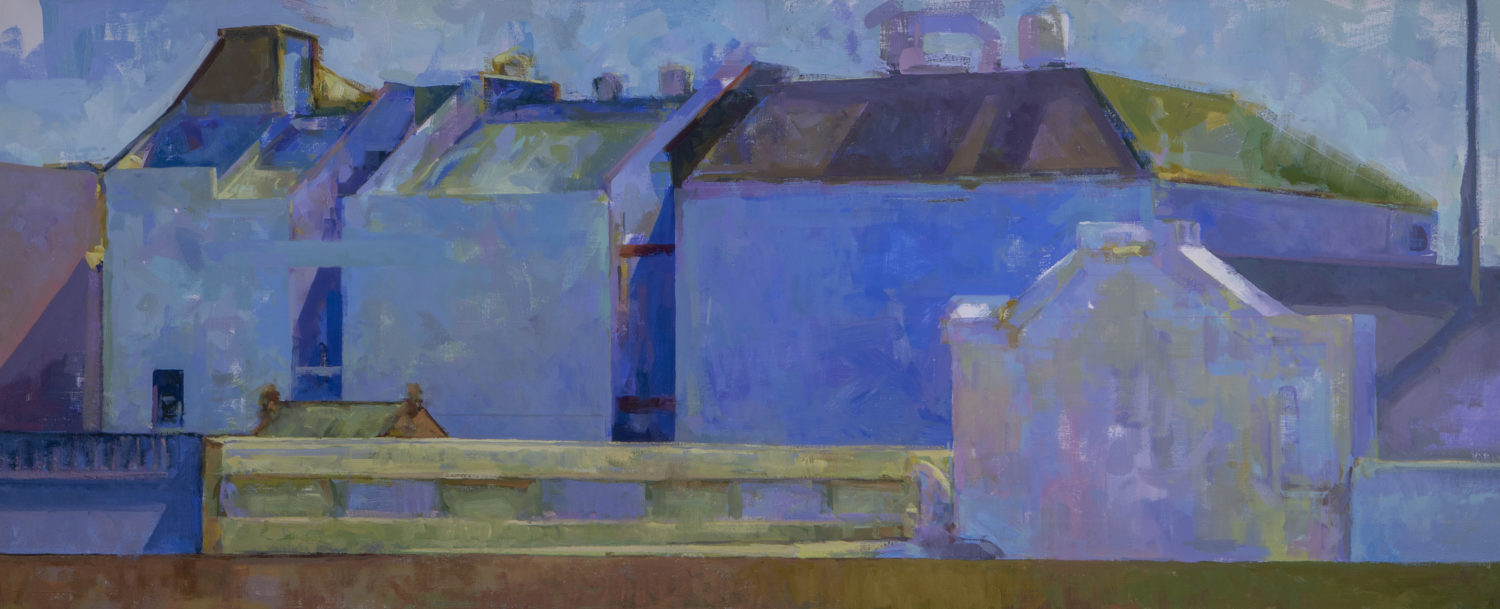
Joe Forkan: “Spurgeon, Raking Light”
Forkan’s partner, Crystal Yachin Lee, produces work with a similar modernist appearance. Yet she creates her pastoral images using only the camera. Her images in this exhibition, all from her “Balloons” series, depict colorful hot-air balloons, set against bright blue skies, some with striated white clouds. She explains that this work is “inspired by Chinese painting and calligraphy, in which negative space (white space) is considered part of the composition.”
Superstar artist Jeffrey Vallance, and his partner Victoria Reynold, grace this exhibition with their poultry-inspired paintings and collages. Vallance’s “Martyr Hen collage with holy cards and metal icon” features a large whole raw chicken as its centerpiece; it is then surrounded by pictures of various holy figures, presumably from Catholicism. His “The Visible Blinky” features a similarly large chicken, but this one is of a live bird, surrounded by smaller birds and by canned products containing poultry parts.
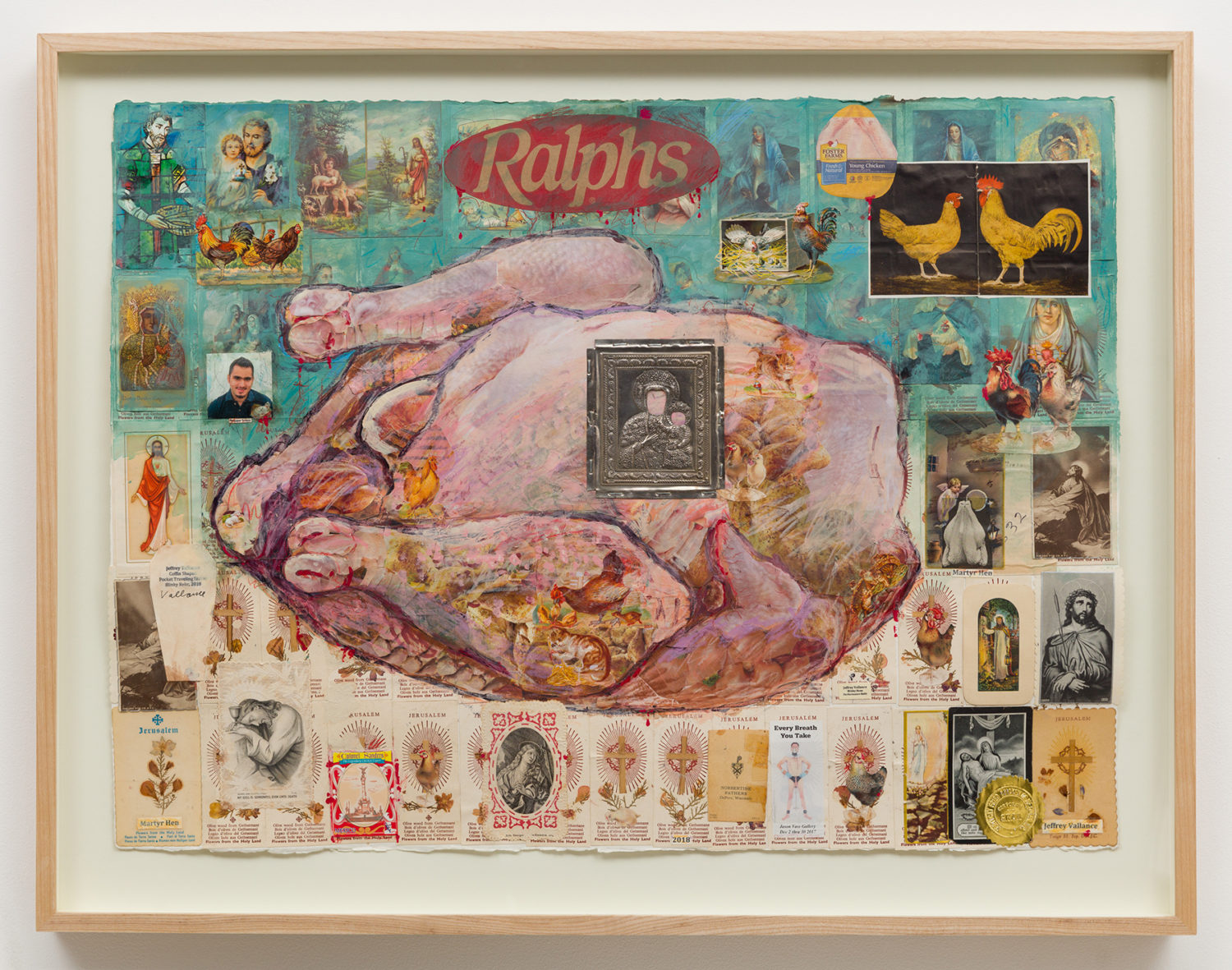
Jeffrey Vallance: “Martyr Hen”
Vallance collaborated with Reynolds to paint the oil, “Blinky Palermo.” This work simply features a store-bought chicken, which is ready to be stuffed, seasoned and put into the oven.
Whether Vallance’s and Reynold’s paintings pay homage to the glory of eating chicken or are intended to inspire viewers to become vegetarians is unclear. Yet the artists’ humor, out-of-the-box perspectives and deft artistry have helped propel them to what may be described as “iconic” status.
“Terra Incognito” is on view through October 17, 2020, at Orange County Center for Contemporary Art, Santa Ana; Hours by appointment only due to COVID-19; 714-667-1517; http://www.occca.org/2020-08.html
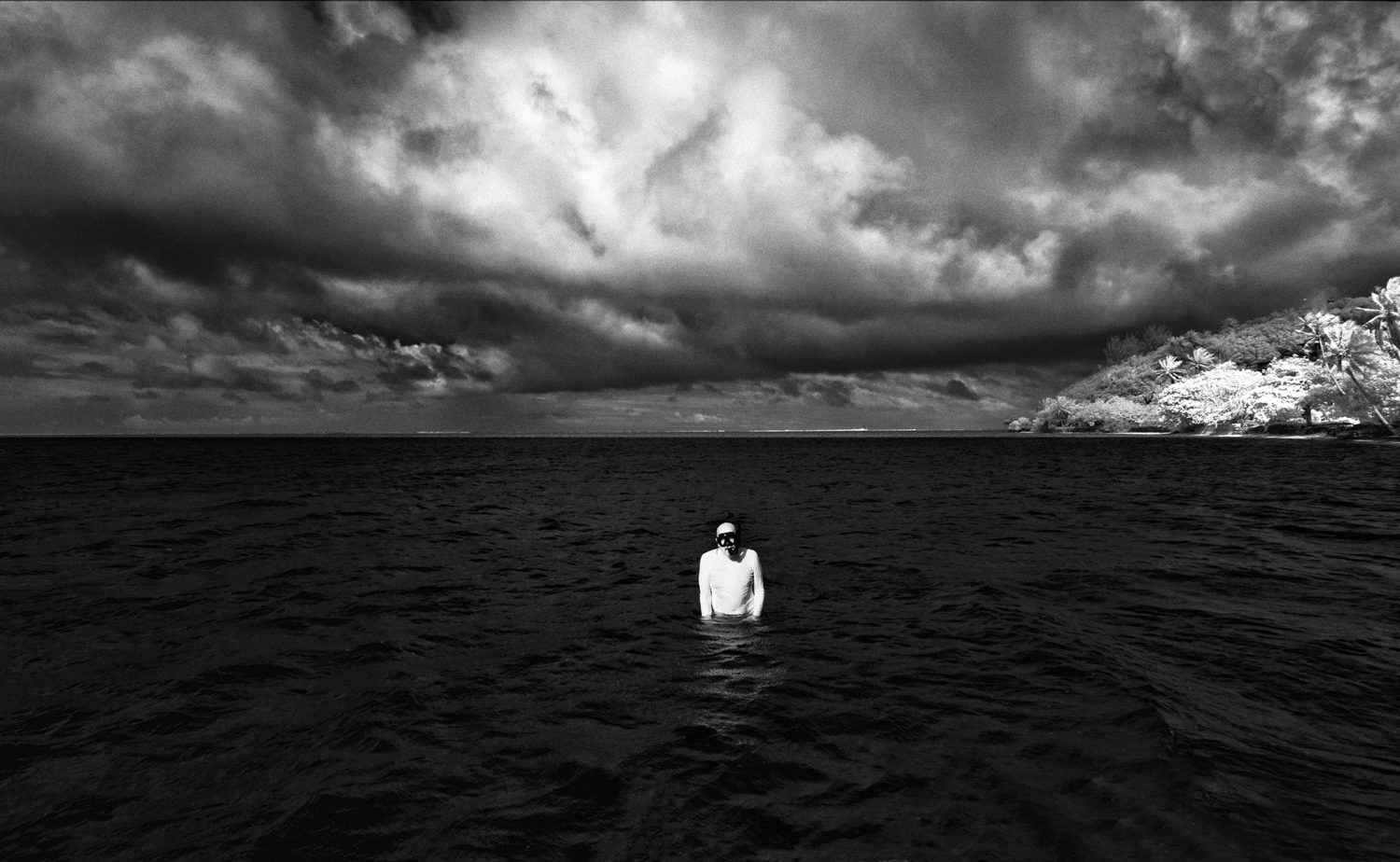
Robin Repp: “Barren Reef”
Advertising disclosure: We may receive compensation for some of the links in our stories. Thank you for supporting Irvine Weekly and our advertisers.

